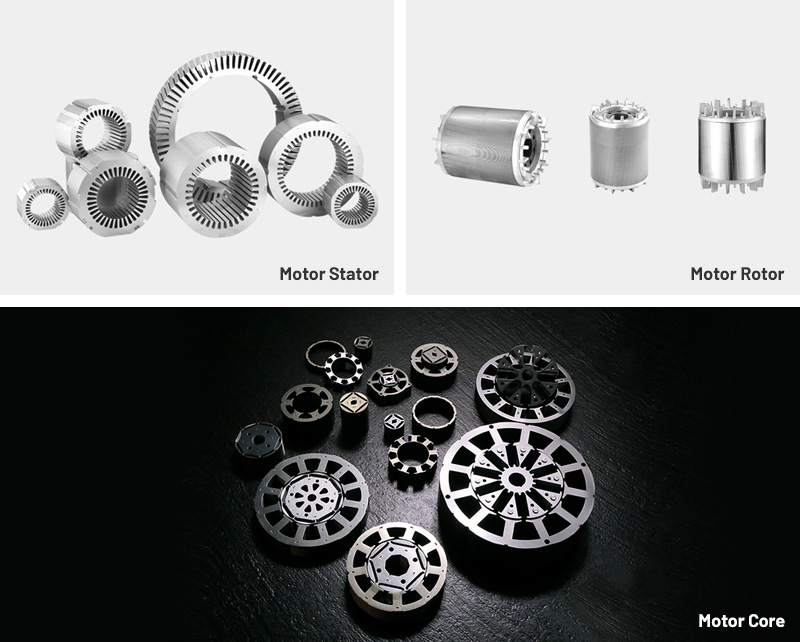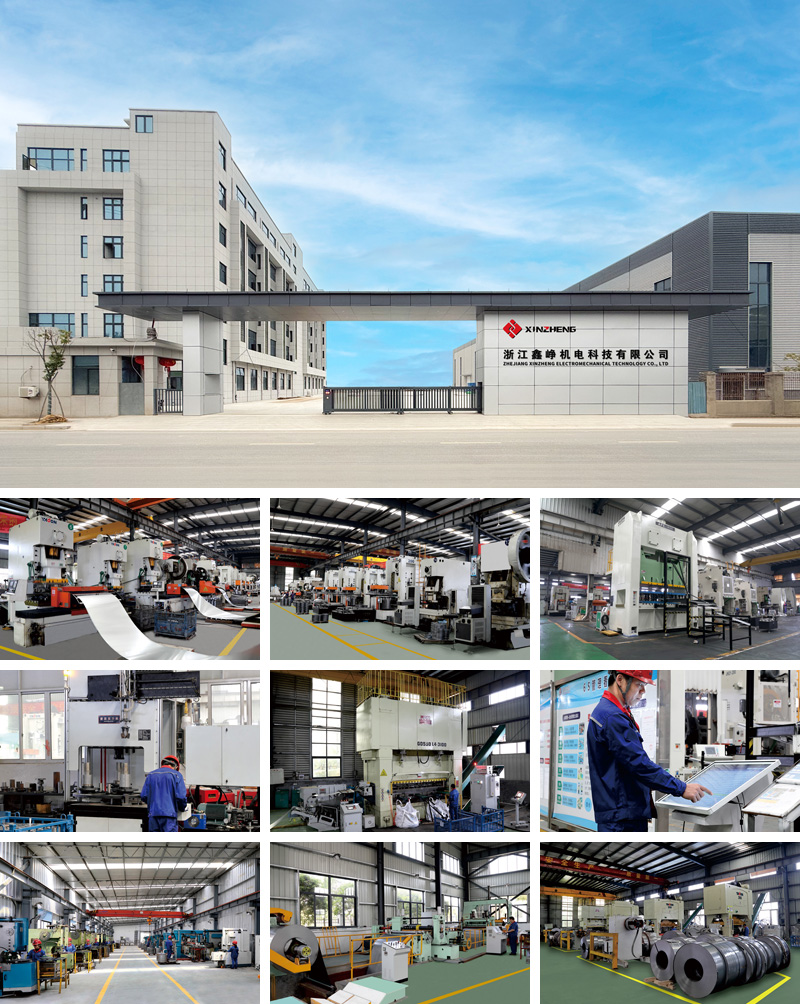With the global push toward energy efficiency and environmental sustainability, the electric motor industry faces increasing pressure to reduce energy consumption and operational costs. Electric motors account for nearly 45% of industrial electricity consumption worldwide, making improvements in motor efficiency a critical component of energy-saving initiatives. Governments and industrial standards agencies, such as the International Electrotechnical Commission (IEC) and the U.S. Department of Energy (DOE), have implemented strict efficiency requirements, prompting manufacturers to adopt high-efficiency designs. Among these, high-efficiency energy-saving motor laminations have emerged as a vital technology to minimize losses while maintaining reliable motor operation in industrial, commercial, and renewable energy applications.
Motor laminations are thin sheets of electrical steel stacked to form the stator and rotor cores of an electric motor. The primary purpose of laminations is to reduce eddy-current losses and minimize hysteresis in the motor’s magnetic circuit. High-efficiency energy-saving laminations achieve this by using specialized low-loss electrical steel grades and advanced insulation coatings that prevent inter-sheet currents.
Key technological factors include:
Material Selection: High-grade silicon steel or amorphous steel improves magnetic permeability and reduces core loss.
Precision Stamping: Minimizes burrs and maintains tight tolerances, ensuring uniform magnetic flux distribution.
Insulation Coating: High-temperature-resistant coatings prevent eddy currents between layers, enhancing thermal stability.
Stacking Technique: Optimized lamination stacking reduces vibration, noise, and mechanical stress while maintaining alignment of rotor and stator components.
High-efficiency energy-saving motor laminations consist of stator and rotor core laminations. The stator laminations are assembled into a cylindrical frame with slots for winding coils, while rotor laminations form the rotating core of the motor.
Performance Characteristics:
Reduced core losses and improved magnetic flux distribution
Enhanced thermal stability under high-speed rotation
Lower vibration and acoustic noise levels
Increased motor efficiency, supporting IE3 or IE4 energy standards
Materials:
High-permeability silicon steel (0.35–0.50 mm thickness)
Amorphous steel for ultra-low-loss applications
Heat-resistant and electrically insulating coatings
Manufacturing Processes:
Sheet Production: Electrical steel sheets are cold-rolled and annealed to optimize magnetic properties.
Lamination Stamping: High-precision dies cut laminations to exact dimensions, minimizing edge burrs and deformation.
Coating Application: Insulating varnish or phosphate coatings prevent interlaminar eddy currents.
Stacking and Core Assembly: Laminations are stacked using automated or manual techniques, with tight control over alignment and mechanical stress.
The performance of high-efficiency motor laminations depends on multiple interrelated factors:
Material Consistency: Variations in silicon content or sheet thickness can significantly affect magnetic properties.
Precision in Stamping: Burrs or misalignment increase hysteresis and eddy-current losses.
Insulation Integrity: Damaged or uneven coatings lead to inter-sheet currents, generating heat and reducing efficiency.
Stacking Accuracy: Misaligned laminations cause increased vibration, noise, and mechanical wear.
Thermal Management: Laminations must maintain performance under sustained operational temperatures to avoid magnetic saturation and insulation breakdown.
Selecting reliable suppliers is critical for maintaining the quality of high-efficiency laminations. Key considerations include:
Material Certification: Suppliers should provide detailed specifications and test reports for electrical steel grades.
Process Control: Established manufacturers employ automated stamping, coating, and stacking processes with consistent tolerances.
Traceability: Each batch should be traceable to raw material sources and manufacturing records.
Compliance with Standards: Suppliers must meet international efficiency and safety standards, including IEC, ISO, and local regulations.
Motor laminations face several challenges in design and manufacturing:
Eddy-Current Losses: Poor insulation or improper lamination stacking can increase energy losses.
Thermal Overload: Excessive heat reduces efficiency and can damage insulation.
Material Variability: Differences in steel composition can lead to inconsistent magnetic performance.
Noise and Vibration: Misaligned laminations cause mechanical instability, increasing operational noise.
Addressing these issues requires careful material selection, precision manufacturing, and stringent quality control.
High-efficiency energy-saving motor laminations are widely used across industries where electric motors are critical:
Industrial Machinery: Motors in pumps, compressors, and conveyors benefit from reduced energy consumption and longer lifespan.
HVAC Systems: Air conditioning and ventilation units achieve lower operating costs with energy-efficient laminations.
Renewable Energy: Wind and hydroelectric generators require low-loss rotor laminations to maximize output.
Automotive and EV Motors: Electric vehicles use laminations designed for high-speed, high-efficiency performance.
Home Appliances: High-efficiency washing machines, refrigerators, and fans incorporate optimized laminations for energy savings.
The demand for energy-efficient electric motors continues to rise, driven by environmental regulations and industrial electrification. Emerging trends include:
Advanced Materials: Use of amorphous and nanocrystalline steel for ultra-low-loss laminations.
High-Speed Laminations: Design improvements for motors operating at elevated speeds while maintaining low losses.
Automation in Manufacturing: AI-assisted stamping, coating, and stacking improve consistency and reduce defects.
Integration with IoT and Monitoring: Laminations optimized for sensors and predictive maintenance in smart motors.
The future of high-efficiency energy-saving laminations will focus on reducing core losses further, increasing motor reliability, and enabling broader adoption in energy-critical applications.
Q1: How do high-efficiency laminations reduce energy consumption?
They minimize eddy-current and hysteresis losses in the magnetic core, allowing motors to convert more electrical energy into mechanical energy efficiently.
Q2: What materials are typically used in these laminations?
High-permeability silicon steel and amorphous steel are common, often coated with heat-resistant insulating varnishes.
Q3: Can these laminations be used in high-speed motors?
Yes, they are designed to maintain structural integrity, reduce vibration, and sustain thermal performance in high-speed applications.
Q4: How does stacking affect performance?
Proper stacking ensures uniform magnetic flux distribution, reduces mechanical stress, and minimizes noise and energy losses.
Q5: What industries benefit the most from energy-saving laminations?
Industrial machinery, HVAC systems, renewable energy generators, electric vehicles, and home appliances all benefit significantly.
High-efficiency energy-saving motor laminations are pivotal in modern motor design, providing measurable energy reductions, improved performance, and extended motor lifespan. Through careful material selection, precision manufacturing, and rigorous quality control, these laminations address industry challenges such as core losses, thermal management, and vibration. As energy efficiency regulations tighten and global demand for sustainable solutions rises, advanced laminations will continue to play a central role in industrial, commercial, and consumer motor applications. By investing in optimized laminations, manufacturers can achieve compliance, cost savings, and operational reliability while contributing to a greener, more energy-conscious future.
Product Category

Comprehensive Strength


Copyright © Zhejiang Xinzheng Electromechanical Technology Co., Ltd. All Rights Reserved.
This website uses cookies to ensure you get the best experience on our website.